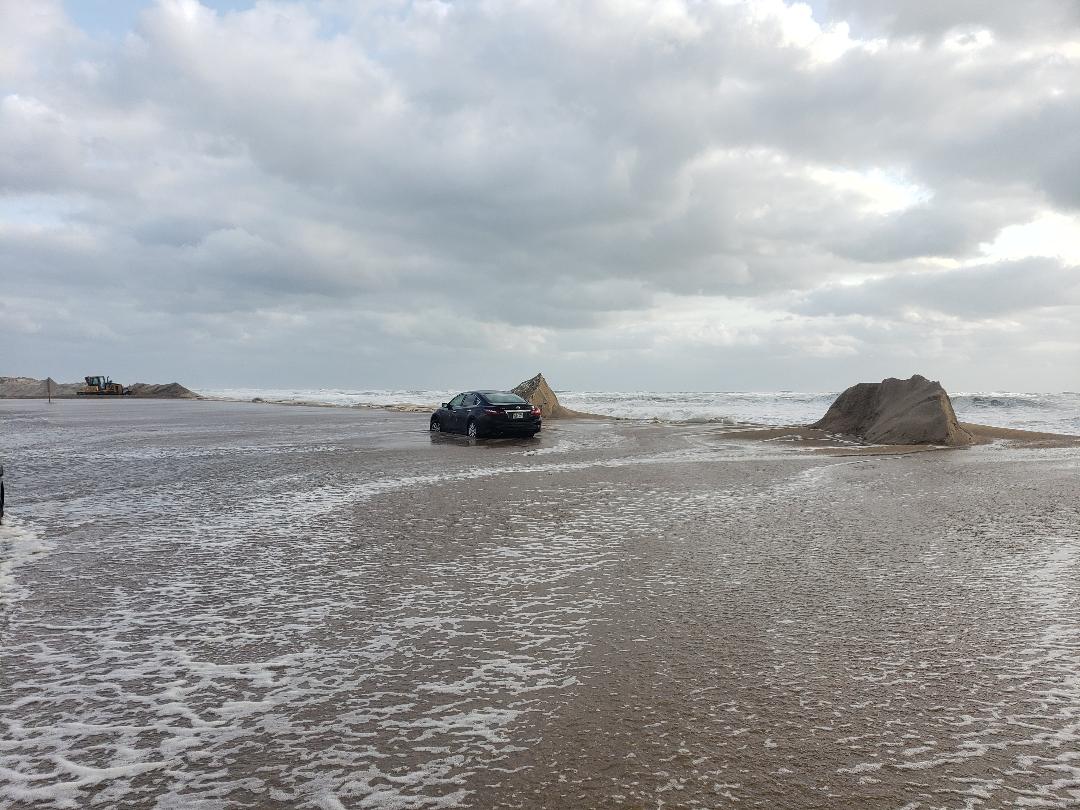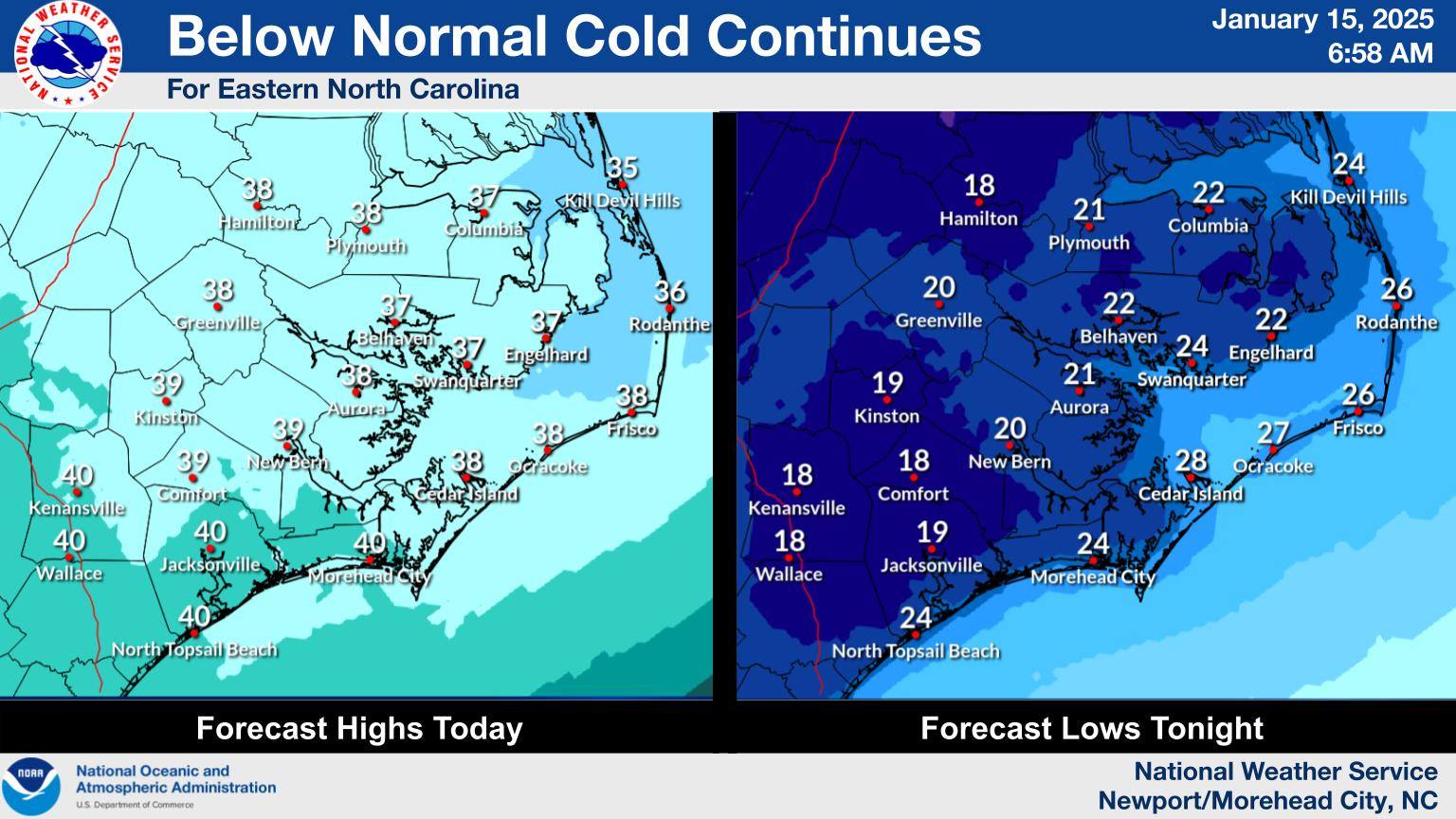Winds, seas have made ORVtravel to Cape Point treacherous
A long period of sometimes gusty northeast wind and high waves pounding the beach have made off-road vehicle travel to Cape Point challenging and treacherous.
National Park Service law enforcement rangers did close the area briefly over the weekend to assess the situation and then re-opened it and stayed nearby for a time to warn drivers of the beach conditions.
Now the ORV route to Cape Point is marked with a sign warning drivers that it may be impassable during periods of high tides. And it could be dangerous for drivers unfamiliar with beach driving at other times.
According to NPS public affairs specialist Cyndy Holda, the beach adjacent to and immediately south of the area known as the “Narrows” has badly eroded and there has been an escarpment — or steep cliff — making travel there impossible at times at high tide.
Although there is a bypass behind the dunes right at the Narrows, the bypass itself returns to the beach in the badly eroded area, reducing its usefulness to drivers.
Drivers who do decide to make the trip should be aware of the tides and even wind direction. If you get out there at low tide, you may not be able to get back at high tide and have to wait until the next low water.
Holda said some callers to the Park Service headquarters have asked why Ramp 45 cannot be opened so that ORVs have access to Cape Point from the south, instead of through Ramps 43 or 44 to the north.
Holda notes that since the seashore’s ORV plan and special regulation were implemented in February 2012, the area just south of the Point is a vehicle-free area (VFA) and that Ramp 45 in no longer available as on ORV route.
The regulations allow the superintendent to open routes that are closed to ORVs temporarily but only under very specific circumstances.
For instance, for a weekend last winter, the beach in that area was opened to ORVs, so that vehicles could travel from Ramp 45 in Buxton to Ramp 49 in Frisco while the N.C. Department of Transportation closed Highway 12 to traffic for two days to replace a culvert.
In that instance, the VFA was opened for only two days in the late winter when fewer folks are on the beach and the beach route was needed for reasons of public safety.
Holda said she has also been asked why the Park Service can’t put a front-end loader on the beach to knock down the sand cliff.
Heavy equipment work on the beach would need compliance and approval by other agencies, and we do not perform that type of work on a “natural” beach without a great deal of oversight from all,” Holda said in an e-mail. “The NPS (has been) cited by a state agency for use of heavy equipment work on the beach to open a drainage ditch without the proper required permits.”
The erosion of the beach at the narrows is not unusual, especially in the winter, when the prevailing winds tend to be from the northeast. A southwest wind for a period of time helps the beach build back out.
And what we need for the fall fishing season is more southwest wind.








